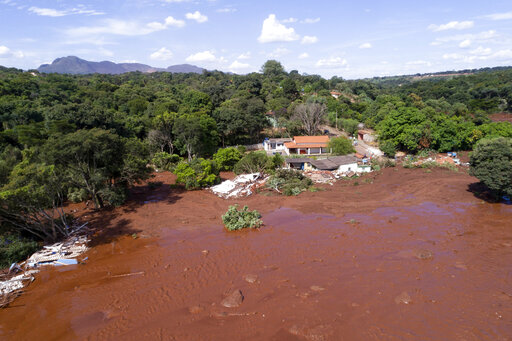The most widespread type of dam used to store mine waste is nearly twice as unstable as the average tailings facility, a global study showed on Friday, highlighting the risk of so-called “upstream” construction techniques which some countries have banned.
Concern over tailings dams intensified after the deadly collapse of Vale’s Brumadinho upstream facility in January 2019.
Some 10% of all the facilities surveyed had reported a stability issue, the authors found, but that figure jumped to 18.3% for active upstream facilities.
The volume of mine waste worldwide is projected to grow 26% over the next five years according to company disclosures analyzed in the study published in Scientific Reports, one of Nature’s open-access journals.
The disclosures requested by the Church of England and Swedish Council on Ethics cover 1,743 tailings facilities, representing an average 36% of current global commodity production.
A new global tailings standard launched last year stopped short of banning upstream dams.
But investors, banks, insurers and local communities are unlikely to support their construction given elevated risks, said Adam Matthews of the Church of England Pensions Board and one of the study’s authors.
“I think you’ll find enormous scrutiny,” he said.
Around one-fifth of dams built in the last decade have been upstream, the study found.
Cheaper to build, they are more dangerous because their walls are constructed over a base of muddy mining waste rather than on solid ground. Chile, Peru and Brazil have banned the structures.
But globally, the use of alternative technologies such as “dry stack,” or de-watering, to reduce risks has stayed static between 3% and 6% since 1970, the study found.
“For a long time the mining industry has been able to treat tailings as an externality and the incentives weren’t there to take up innovations to manage tailings differently,” said Daniel Franks, lead author and professor at the University of Queensland.
“Now that it’s become a strong concern for investors, governments, and society, there’s a real opportunity to embrace reform.”
The study called for further investor engagement with non-responsive companies, including privately-owned or state-owned miners.
About the photo: An aerial view shows flooding triggered by a collapsed dam near Brumadinho, Brazil, Friday, Jan. 25, 2019. Brazilian mining company Vale SA said it didn’t yet have information on deaths or injuries at the dam but said that tailings have reached the community of Vila Ferteco. (Bruno Correia/Nitro via AP)
Was this article valuable?
Here are more articles you may enjoy.


 What The Return of California’s ‘Death Discount’ Means for Litigation
What The Return of California’s ‘Death Discount’ Means for Litigation  Musk’s xAI Faces California AG Probe Over Grok Sexual Images
Musk’s xAI Faces California AG Probe Over Grok Sexual Images  Singer’s Elliott Sued by PE Firm in Escalating Fight Over Money
Singer’s Elliott Sued by PE Firm in Escalating Fight Over Money  OpenAI And Microsoft Sued Over Murder-Suicide Blamed on ChatGPT
OpenAI And Microsoft Sued Over Murder-Suicide Blamed on ChatGPT 